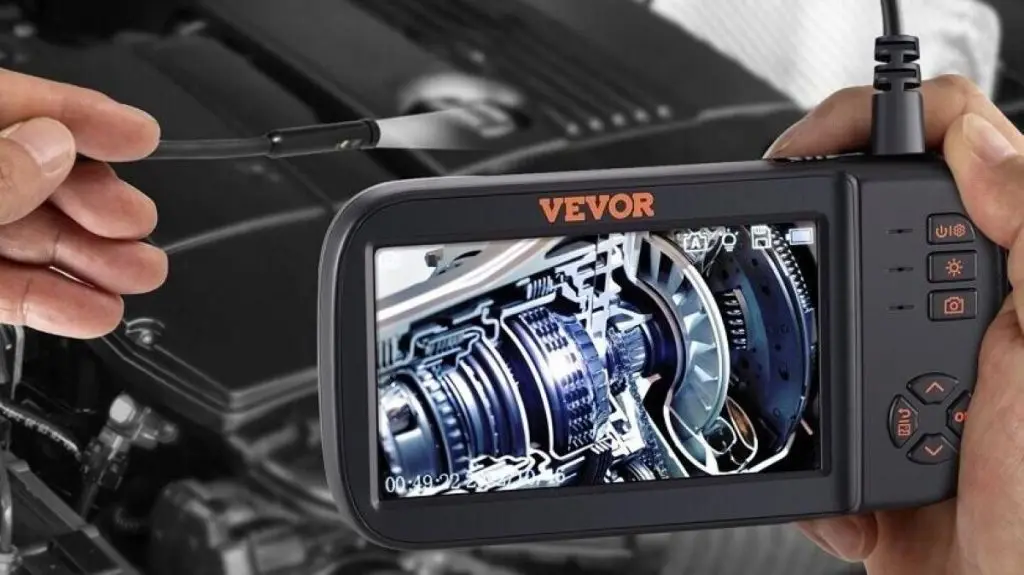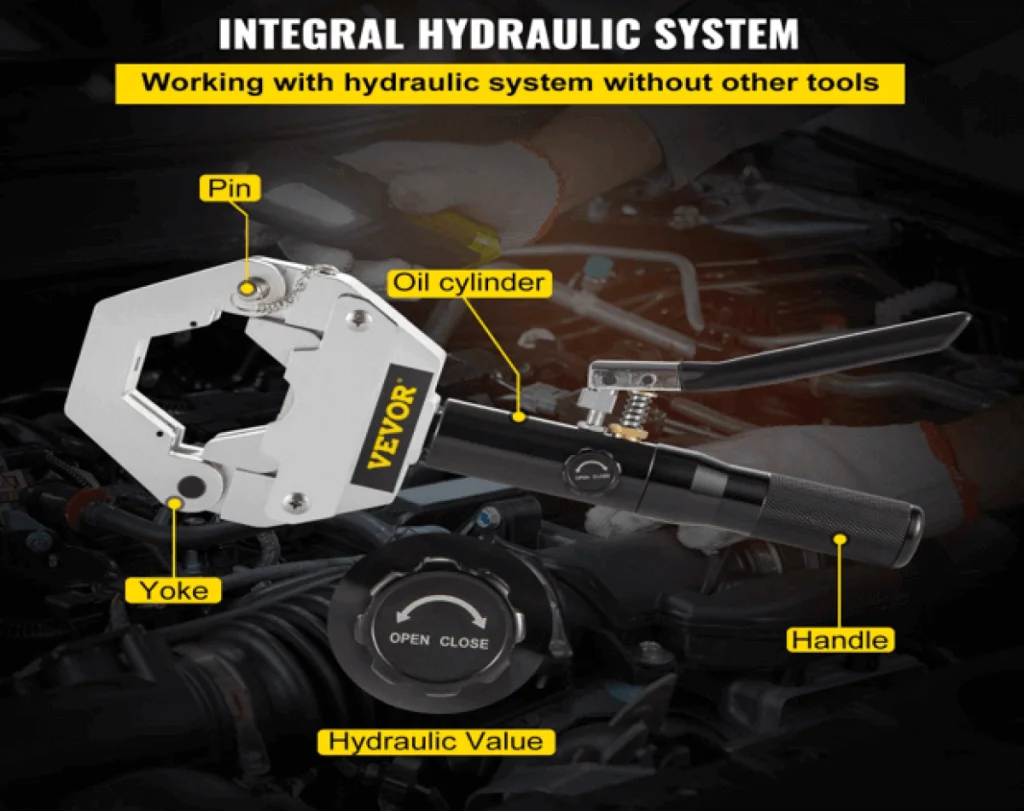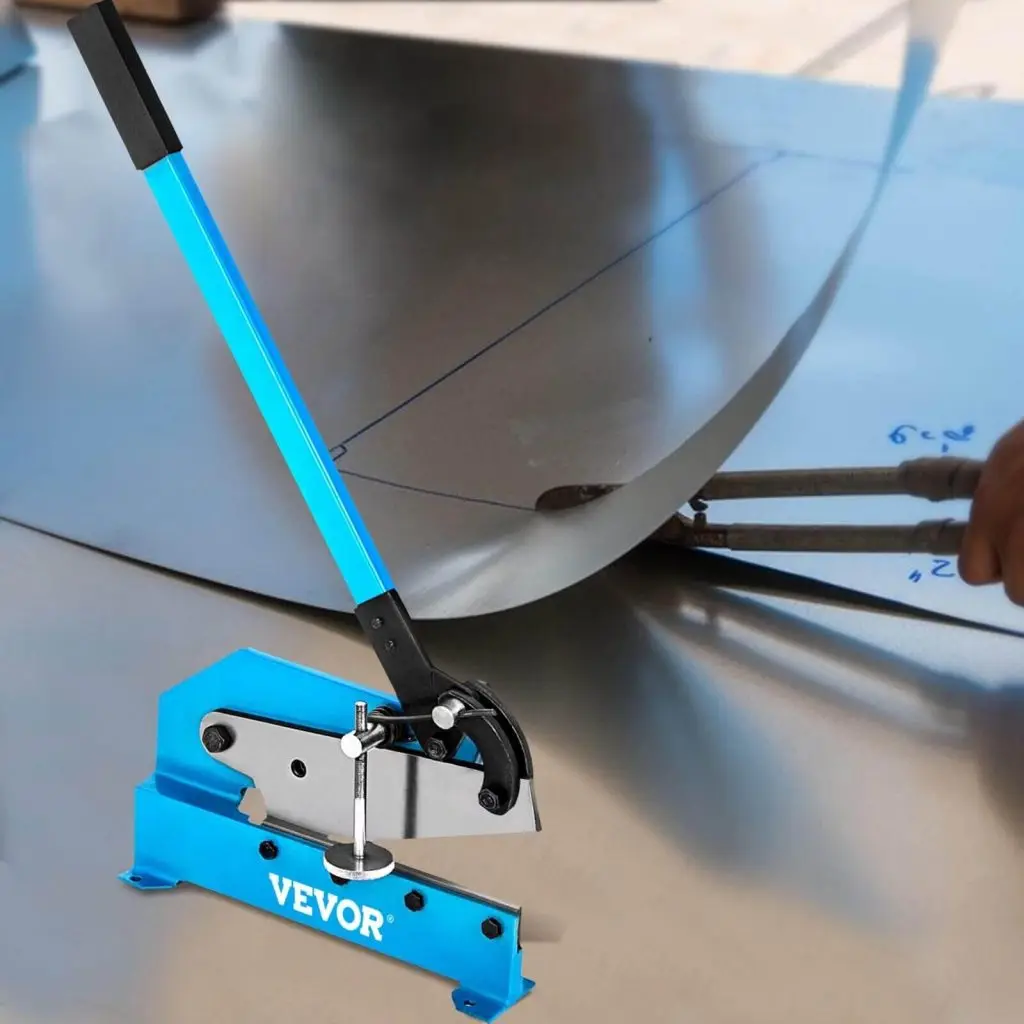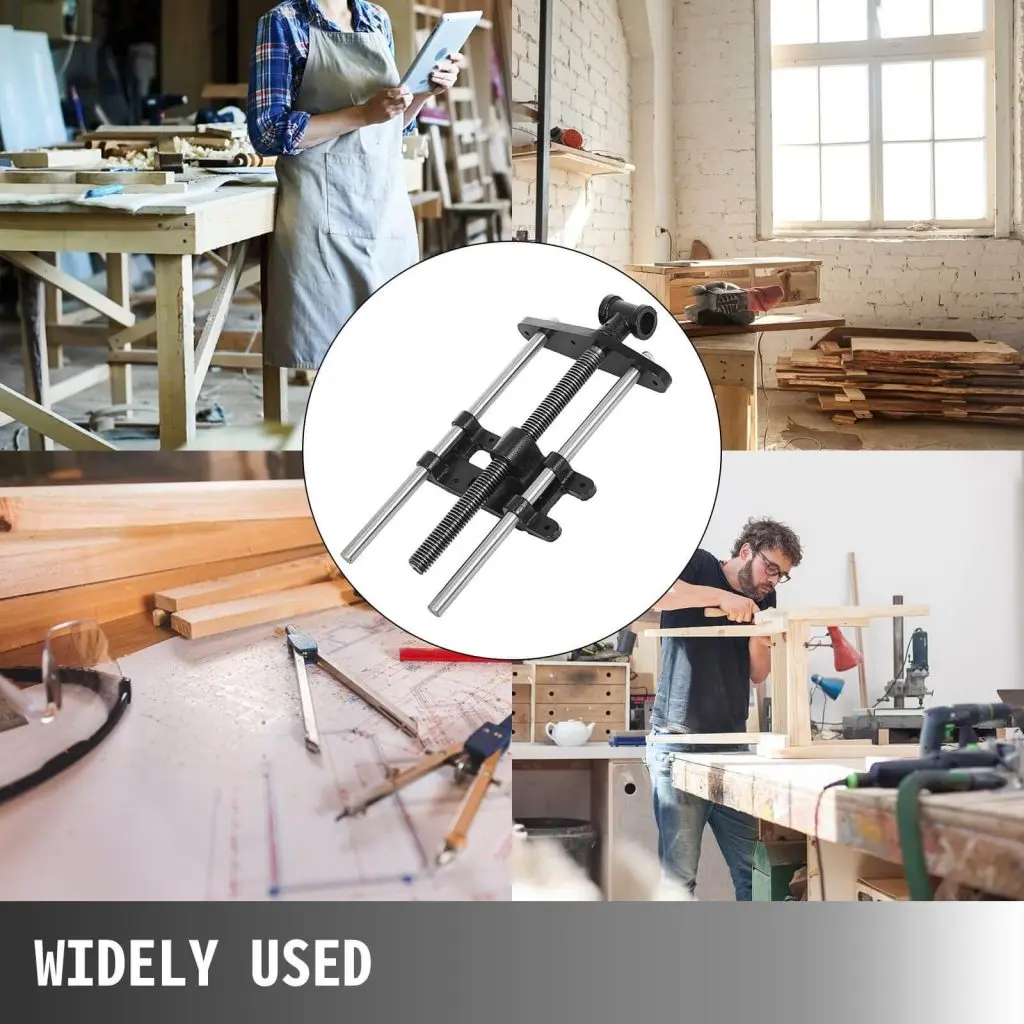Imagine yourself trying to fix new curtains for your home. The first thing to do would be to fix the curtain rod. You have everything you think you need to get the job done so you get to work— hammering and nailing but you have made a mistake; the rod isn’t properly aligned. What kind of curtain hangs silently on your wall?
The ordinary person might find a straight object like a ruler, make the markings first before going over the whole process again, and maybe this time, it works. One thing is for sure — you’re exhausted from wasting time, effort, and expending energy on such a simple task. In this day and age, there are simple machines called laser levels that can help you get the straightest lines without batting an eyelid. Most of them, including the VEVOR laser level, are easy to use and provide accurate and precise measurements without needing an extra hand.
If you’re reading this, you most likely have been thinking of getting a laser level. But before going ahead to make a purchase, it’s best to find out the different types of laser levels, how they work, and how to choose the most appropriate one for whatever construction or DIY project you’re interested in. This guide provides all of the information you need in choosing the right type of laser for your project.
Table of contents
What is a Laser Level?
Anyone working in the carpentry or construction industry would probably have heard of this tool before. A laser level is a device that gives off or projects beams of light (typically red or green) along an axis. The beam produced can be adjusted depending on the type and manufacturer of the machine but generally, most laser levels can be adjusted from ground to ceiling level.
Laser levels are portable but that doesn’t mean they should be mishandled since they can be extremely fragile. They also require increased supervision to avoid shaking or tilting while in use. Precision is key with these tools, so it’s important to preserve their sensitivity by regular inspection even when they come with extra safety switches.
Regardless of the type of laser level you use, they all have basic common components which include but are not limited to the following:
- Laser Diode which is responsible for emitting the laser.
- A Leveling Mechanism to ensure the laser beam is accurately leveled (manual or self-leveling).
- Control Panel containing buttons and switches to allow the machine to perform its various functions.
- Battery Compartment that is the powerhouse of the machine.
- Housing or casing that encloses and protects the internal components.
How Laser Levels Work
To use laser levels like a pro, it’s important to know the working operations of these tools. Understanding their mechanisms mean they would work better and provide accurate measurements at all times.
- Read the instructions for use on the manufacturer’s label.
- Set the machine up by placing it on a stable, flat surface or a tripod so that it mounts properly.
- Put on safety goggles to counter the effect of radiation on reflective surfaces that could enter your eye.
- Turn the power on or if it uses a battery make sure it’s properly inserted. When the device is on, you can adjust the controls to get the perfect beam.
- If the laser has an internal sensor, it is self-leveling and will give you precise measurements.
- After leveling, you can monitor, adjust, and direct the beam onto your preferred surface.
Why Use a Laser Level?
You may have gotten a hint from the few information shared above on the benefits of using a laser level. For more clarity, this section provides in-depth information on the usefulness of laser levels. In the end, you will understand why getting a laser level would make a great addition to your toolkit.
Precision and Accuracy
If you’re a fan of work well done, you’ll appreciate how accurate this device can be. The tiniest mistakes in construction work and even in simple DIYs can be annoying. To eliminate the incidence of errors, a laser level helps to provide a visible beam that ensures precision in alignment. Hence, there is no guesswork needed when you have this tool, and you’ll have unparalleled confidence in yourself and your work.
Efficiency and Time-Saving
Using a laser level saves time and makes the measurement process of your project simple and effortless. Yes, you have the option of using older methods (like string lines) but you can’t completely eliminate human errors plus you’d spend more time setting up.
When you compare that experience to what you get with a laser level which provides a reference line immediately, completing the task effectively and efficiently, giving you no reason to doubt its accuracy, you will understand it’s way better. Trusted brands like VEVOR produce quality laser levels that are designed for the highest level of precision. Better efficiency means less time spent on measurement.
Types of Laser Levels
There are different kinds of laser levels available in the market today with different unique qualities tailored to specific uses. For instance, a line or dot laser is more suited for interior use while rotary lasers are more commonly used outdoors. In this section we’ll get into more detail about the different kinds of laser levels and what they are used to achieve in construction, surveying and DIY projects.
Dot Laser Levels
Dot laser levels project one or multiple laser dots on walls and other surfaces, acting as reference points to level and align construction tasks.
Features of Dot Laser Levels
Single dot laser levels are ideal for simple alignment while multiple dot laser levels (e.g. at 90-degree angles) are great for squaring across different rooms.
Typical Uses: These tools can be used in construction to ensure the floor, ceiling, and walls are level. In carpentry, they are used for framing, shelving, and making cabinets. They are also used for installing electrical fixtures and switches, and for aligning equipment for complicated systems like HVAC.
Line Laser Levels
Line laser levels give off one or more horizontal and/or vertical lines. They are commonly used in projects involving construction, carpentry, including installation projects. Some models are versatile and provide angles up to 360 degrees.
Features of Line Laser Levels
- Laser Type: Could be red or green. The former is mostly used indoors while the latter is used in daytime since it’s more visible when it’s brightly lit.
- Range: Shorter range line lasers are ideal for indoor projects consisting of small to medium tasks while the long-range model has higher visibility and is used outdoors or in large indoor spaces.
- Tilt Mode: Allows the laser to provide accurate leveling for specific tasks involving unusual or sloped surfaces.
Typical Uses: Like the dot laser, it is used in construction, electrical fixtures, carpentry, and HVAC installation. Additionally, it is used for ground work like plumbing and tile installation.
Rotary Laser Levels
Rotary laser levels are the talk of the town when it comes to construction. They are highly versatile since they project a 360-degree rotating beam, creating both horizontal or vertical lines around the entirety of the workspace. The VEVOR laser level is an example of a highly functional rotating laser level.
Features of Rotary Laser Levels
- Self-Leveling: Compared to others which are either self-leveling or manual, this comes only with automatic adjustment to ensure the laser is perfectly level and not prone to human mistakes.
- Extended Range: Can cover both small and large areas, as much as 1,000 feet high and long with a detector.
- Adjustable Speed: The speed of the rotating beam can be tweaked to suit different needs. Their ability to emit rotating beams around an entire space ensures consistency in alignment and precision
Typical Uses: They are used in common construction projects but are also effective for grading, excavating, and some major indoor and outdoor projects like installing ceilings and aligning walls.
Combination Laser Levels
Like the name implies, combination laser levels combine the features of both line and dot lasers, including multi modes that enable them to switch between line, dot, and cross-line modes.
Features of Combination Laser Levels
- Self-Leveling: Like the rotary laser, they allow for automatic leveling for quick setup and precision.
- Multiple Beams: They project multiple beams like lines and dots for complex tasks and layouts.
- Versatility: Combination laser levels are versatile, and can be used for a wide range of projects that require both linear alignment (lines) and point transfer (points). They are highly deployed in carpentry, electrical installations, and plumbing.
How to Choose the Right Laser Level for Your Needs
How can you tell what laser level is best suited for your project? You may have a hint from the features of the different kinds of laser levels we’ve discussed above, but there’s more to these tools than meets the eye. So, you want to be sure before making a purchase.
Consider Your Project Requirements
To discover the right laser level you have to consider the requirements of your projects. This will always determine the best tool tailored to your specific needs. For instance, if you are working on a huge construction project like grading, you will be short-changing yourself by investing in a laser that’s more compatible with simple DIY projects. The bottom line is to choose a laser level with your unique project needs in mind.
Key Features to Look For
When trying to choose a laser level, it is essential to consider some key features. These features are what will determine the efficiency of the laser, and it will also go a long way to determine if it will be the perfect choice for your project. We have discussed some features to look out for when shopping for a laser level.
1. The type
As mentioned, for large indoor workspaces and outdoor projects, rotary laser levels are a perfect match with their 360-degree coverage and high-range specifications. However, for more detailed tasks, combination laser levels can provide both line and dot beams, making them suitable and versatile for projects that require multiple alignment types and point transfer.
2. The laser color
Green lasers give off beams that are extremely visible in bright conditions, which makes them the best choice for outdoor use. Red lasers aren’t as bright during the day but are good enough for indoor projects. In essence, assess the range, location, and task to match the tool with your project’s needs. When you invest in the right tools, you’ll have little to no struggles getting things done.
Benefits of Using VEVOR Laser Levels

The market is filled with a plethora of options for people looking for a laser level. However, out of these myriad of options, we recommend the VEVOR laser level. VEVOR is renowned for manufacturing high quality tools and selling them at affordable rates. This section covers the benefits of buying the VEVOR laser tools and using them for your various projects.
High Quality and Durability
VEVOR laser levels have received many positive reviews for their exceptional quality and durability. To solve the problem of fragility and predisposition to damage because of their sizes, VEVOR’s model of laser levels feature a high-impact composite casing designed to withstand the toughest working site conditions.
These tools also have an IP54 rating, which protects them against harsh weather conditions including water and dust. The laser beam also has an accuracy of ± 1/9 inch at 33 feet, which guarantees precision regardless of the task.
Affordable and Reliable
VEVOR laser levels offer affordable and smart investment for DIYers and professionals in the construction industry. True to the brand’s motto of, ‘Tough Tools, Half Price’, VEVOR’s laser levels are designed to be tough and affordable.
These tools come with a rechargeable 3.7V battery that lasts as long as 8 hours meaning you don’t have to worry about constant charging. These lasers also come with a Type-C charging port for continuous charging when working.
The mount is magnetic which equals effortless use. The VEVOR laser is not only cost-effective but has superior features that provide users, regardless of expertise, with long-lasting and reliable tools without breaking the bank.
Conclusion
Laser levels come in various types, all offering unique functionalities. For instance, the line and dot lasers offer high precision but can be limited in terms of rotation and multimodal features. The rotary and combination lasers are generally used for more detailed tasks with high ranges. Essentially, the kind of tasks you engage in mainly should influence your choice.
All of the various types of laser levels discussed above offer specific benefits for different construction and DIY tasks that require precision in alignment and leveling. While there are several options in the market, we advise that you go for VEVOR laser levels. These tools are powerful, and versatile, and offer top-notch precision at all times. They are also known to be super affordable and durable. Do you want a reliable laser level that can guarantee precision, versatility, durability, and affordability? Visit the VEVOR website today to shop for a tool that guarantees accuracy and saves your time and effort.





